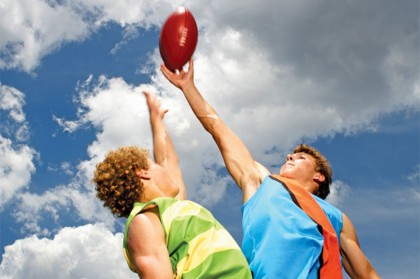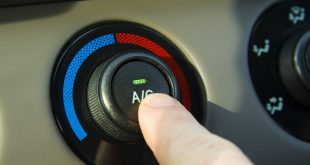
Ask the average gym-going, sport-playing teenage boy if he knows any peers who’ve taken steroids and chances are he’ll say yes. Performance and image-enhancing drugs (PIEDs) are no longer the sole domain of the professional or elite sportsperson and body builder. They’re being used and abused at a grassroots, suburban sport and gym level.
That’s the finding of new data which suggests steroids have become the drug of choice for young men who use injectible drugs, overtaking ice and heroin.
The latest report from the Australian Crime Commission announced that arrests and seizures for PIEDs were the highest on record in 2013-2014, with 84 per cent being sent through international mail.
While most of these events were centred in New South Wales, Queensland’s body-conscious Gold Coast is fast becoming the country’s PIEDs capital, with that area showing the sharpest rise in arrests.
It adds to research released by the Kirby Institute at the University of NSW last year, which found that 74 per cent of people in NSW who started injecting illicit substances in the past three years had sought out PIEDs, compared with only 27 per cent in 2003. Only 11 per cent of new male users preferred methamphetamines such as ice.
It’s a trend which has many experts worried, not only because the practice is illegal but also because of the far-reaching health and safety implications for both users and people who happen to be in their vicinity.
Uneven playing field
What’s even more alarming is that some believe the use of performance-enhancing drugs has made its way into amateur sport and possibly even the Saturday playing fields of our kids.
“We don’t know exactly how widespread it is because the health authorities are concentrating on the top end, but we do know it’s happening for sure and that it’s most likely increasing,” says Dr Jason Mazanov, a University of NSW psychologist who specialises in performance enhancing drug use.
“It’s worrying because at professional levels, sportspeople have access to expert medical advice and monitoring,” he adds. “It’s the weekend warriors who are taking them unsupervised and unchecked.”
And it’s not just the stereotypical beefcakes seeking enhanced performance. “Golfers, for example, take heart medication beta-blockers to steady their hands, kids scull caffeine-loaded energy drinks before games and all sorts of sportspeople take supplements and powders that contain substances banned by sports authorities but are common in daily life. But does that make them drug cheats?” Mazanov says, adding that the key to tackling this culture is education rather than shaming.
A performance-enhanced culture
In order to understand this issue, Mazanov says we need to acknowledge that we live in a society that has a performance-enhancing drug culture woven into its fabric.
We take caffeine to get to work, shakes to lose weight, drinks to put on muscle, drugs to lower blood pressure and all manner of pharmaceuticals and supplements to perform better in our day-to-day lives.
“But when it comes to sport, it isn’t seen as acceptable. It’s a double standard,” Mazanov says. “For example, the ageing weekend comp player who can’t shake a niggling injury and is quite appropriately prescribed a steroid medication by his doctor because it’ll help repair his body faster isn’t doing anything legally wrong, but he’s technically a drug cheat.
“There are real potential health problems for supplements and medications bought off the internet and self-administered without medical supervision.”
While many substances work, it’s to such a small degree that it probably doesn’t make a difference in amateur sport. Mazanov, who’s also editor-in-chief of the research journal Performance Enhancement and Health, says. “There’s a belief that you need to take ‘something’ to win – it’s the same psychological process as you needing a coffee to get to work – and there’s a giant sports supplement and nutrition industry encouraging people to buy things they feel they need but actually aren’t necessary.”
So if you’re a sportsperson or are close to one, it’s important to know the risks involved and how particular training and performance-enhancing supplements are actually intended to work (see box, below).
Bad for kids
For teenagers and their parents, this awareness is even more important because the risks of performance enhancers overwhelmingly outweigh the benefits.
Adolescents have so many hormones and growth chemicals that they wouldn’t really work. Many supplements are about winding back the clock and giving you more energy, endurance or muscle, but for teenagers there’s no clock to turn back. And things like human growth hormone can permanently stunt height,” Mazanov says.
“Adolescents have so many hormones and growth chemicals that they wouldn’t really work. Many supplements are about winding back the clock and giving you more energy, endurance or muscle, but for teenagers there’s no clock to turn back,” Mazanov says.
Even simple low-level caffeine doping before sport (such as drinking energy drinks) doesn’t work for kids. Why? Because they already have so much energy, regardless of their skill levels, that they rarely get to 100 per cent of their capacity, so a stimulant wouldn’t work. In fact, it would be more likely to make them jittery and impair their performance, Mazanov says.
And what if you’re a weekend sportsperson who’s popping a No-Doz or supplement to give you that edge or to keep up with younger players? The experts agree that it’s vital to educate yourself on their benefits and risks, including developing a tolerance and needing more to get the same results.
How body-enhancing substances work
EPO and human growth hormone
Both are hormones that increase red blood cell counts, muscle mass and energy levels, but are extremely dangerous for your liver, heart and organs.
Steroids and steroid precursors
These are used to increase muscle mass and injury recovery. They can be dangerous for liver function, cause an increase in hair growth, trigger “roid rage” and stunt height in growing adolescents. Anabolic steroids are also known to increase cholesterol levels, blood pressure, the risk of blood clotting and an increased level of plaque formation in the arteries, which some scientists believe is behind the rise in instances of young athletes dying of cardiac arrest.
Stimulants
These include high doses of caffeine, pseudoephedrine and Ritalin, and are used to increase energy levels and reaction times. Side effects include muscle tightness, cramping and dehydration.
Beta-blockers
This blood pressure medication slows the heartbeat, and is used in sports such as golf, archery and shooting to calm nerves. Blockers can increase the risk of diabetes, hair loss and sexual dysfunction.
The stats
60%
The percentage of steroid arrests nationwide that take place in Qld. Between 2011-2012 and 2012-2013, the number of seizures in that state rose by 103 per cent.
74%
The percentage of new needle drug users in NSW who took performance- and image-enhancing drugs in the past three years, University of NSW research shows.
31.7
The average age of men who died from anabolic steroid use from 1996-2012, according to the NSW department of forensic medicine.
Source: bodyandSoul
 We are sharing information for knowledge. Presented by. SocialDiary.Net
We are sharing information for knowledge. Presented by. SocialDiary.Net



